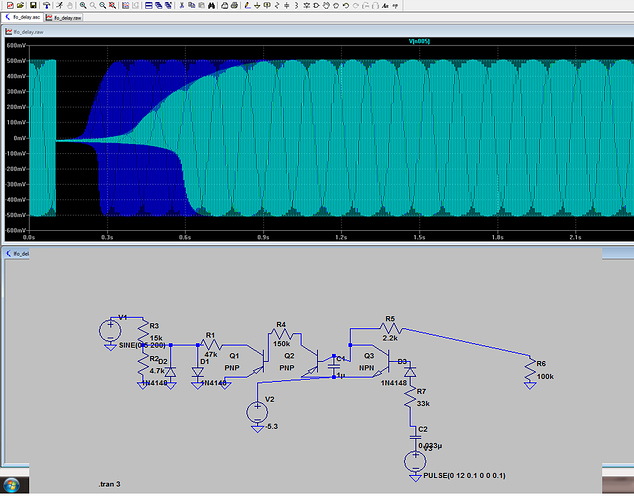Hey there i am trying to reconstruct the envelope of the Roland MC-202 LFO Delay with axoloti.
When you hit a key on a roland mc-202 with lfo delay set to long. After a while the lfo effect on different parameters gently comes in. If you set it to a short delay it goes very fast. ( dark blue signal is short delay time, light blue is long delay time)
on the screenshot of my ltspice simulation of the 202 circuit to do this. you see what happens on a gate signal.
The amplifier of the lfo signal goes quickly to low voltage than it starts soft exponentially and stops soft.
It looks like the curve of limited growth formulas (google it..).
I dont need to have a perfect copy of the 202 circuit but I would like to have this soft beginning and soft stop of the envelope. Also the behaviour of stretching the envelope with increasing delay time would be nice.
I could not manage to find a solution how to do this so far. Can someone help me out a little bit?
thanks alot and all the best,
Flub

